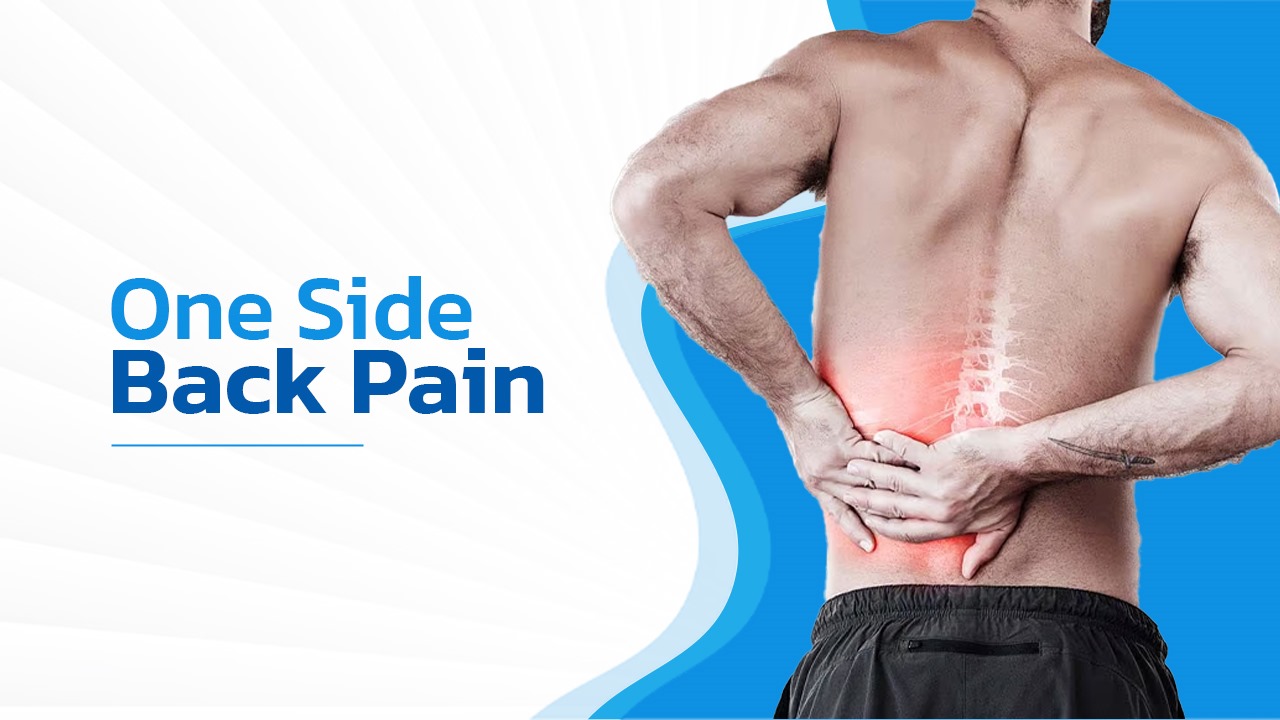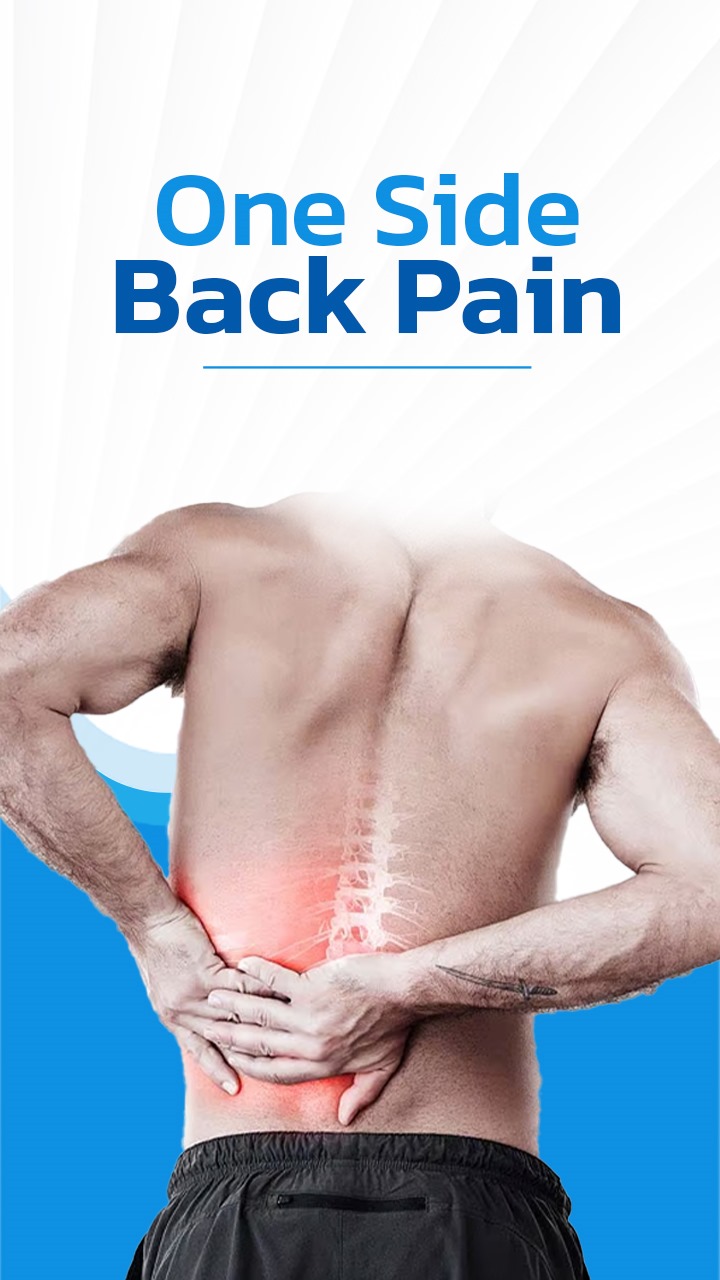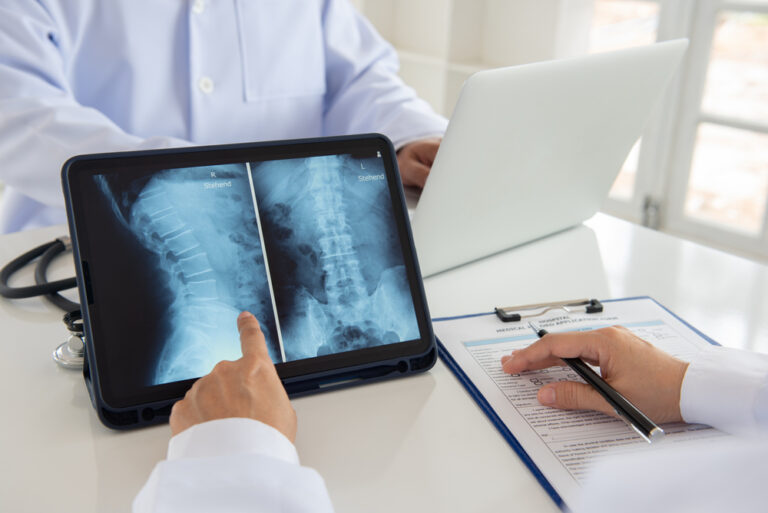

Understanding One Side Back Pain: Causes, Symptoms, and Treatment at Spine Clinics
Back pain is a common issue, but when it’s concentrated on one side, it can indicate specific spinal conditions. One side back pain can range from mild discomfort to severe pain, affecting your ability to perform daily tasks. At specialized spine clinics, we aim to diagnose the root cause of your pain and provide tailored treatment plans to help you find relief.
About Us

Dr Priyank M. Patel, a leading Spine Specialist Doctor in Thane, specializes in both surgical and non-surgical treatments for spine disorders, with a focus on spine tumours. As one of the youngest independent surgical consultants in India, he is affiliated with a top hospital in Mumbai and has extensive international training in advanced spine procedures. Although skilled in surgery, Dr. Patel advocates for conservative treatments when possible, emphasizing an active lifestyle and corrective exercises. He has treated professional athletes and is recognized globally, frequently speaking at international spine conferences.
What is One Side Back Pain?

One side back pain refers to discomfort localized to either the left or right side of your spine. This can occur in various parts of the back, from the upper to the lower regions. Whether it’s a dull ache or a sharp sensation, understanding the potential causes of this pain can help you address it effectively.
Common Causes of One Side Back Pain
There are several one side back pain causes, ranging from muscle strain to more complex spinal conditions. Let’s explore the most common reasons:
Muscle Strain and Overuse
A muscle strain is one of the most frequent one side back pain reasons. It can happen due to overuse, poor posture, or lifting heavy objects improperly. This often leads to soreness and stiffness in the affected area.
Herniated Disc
A herniated or slipped disc can lead to pressure on nearby nerves, causing pain in back one side, particularly in the lower back. This condition often results in radiating pain down one leg, known as sciatica.
Spinal Imbalance
Spinal misalignment due to conditions like scoliosis or poor posture can cause lower back pain on one side. These imbalances place uneven pressure on the spine and its surrounding muscles.
Kidney Issues
Kidney stones or infections often cause sharp pain in the lower back, particularly on one side. While this pain originates from the kidney, it may be mistaken for a spinal issue due to its location.
Sciatica
Sciatica is a condition caused by irritation of the sciatic nerve. This can result in back pain on one side of lower back, often accompanied by numbness or tingling sensations that extend to the hips and legs.

Symptoms of One Side Back Pain
Identifying the symptoms of one side back pain can help in diagnosing the underlying cause. Here are some key indicators:
- Sharp or dull pain localized to one side of the back.
- Pain that radiates to the hips, legs, or shoulders.
- Stiffness and difficulty moving the affected area.
- Muscle spasms or tenderness on one side of the spine.
- Pain that worsens with specific movements or prolonged sitting.
Diagnosis and Tests for One Side Back Pain
At our spine clinic, diagnosing the cause of your one side back pain begins with a thorough evaluation. Here’s what you can expect:
- Physical Examination: A detailed examination to assess your range of motion, posture, and areas of tenderness.
- Imaging Tests: X-rays, MRIs, or CT scans may be recommended to get a clear view of the spine and surrounding tissues, helping to identify issues like herniated discs or spinal misalignment.
Treatment Options for One Side Back Pain
Our spine clinic offers several treatment options to address lower back pain on one side, tailored to your specific condition:
Physical Therapy
Physical therapy is essential in managing and reducing one side back pain. Exercises designed to strengthen the core, improve flexibility, and correct posture can significantly reduce discomfort and prevent recurrence.
Medication and Injections
Over-the-counter pain relievers or anti-inflammatory medications can help reduce pain and swelling. For more severe pain, corticosteroid injections directly into the affected area may provide relief.
Chiropractic Care
For patients experiencing pain due to spinal misalignment, chiropractic adjustments can help realign the spine, reducing pressure on the nerves and easing pain in back one side.
Surgical Intervention
In cases where conservative treatments fail, surgery may be necessary. Procedures like discectomy or spinal fusion can relieve nerve compression and stabilize the spine.

Preventing One Side Back Pain
Prevention is key to maintaining a healthy spine. Here are some tips to prevent future episodes of one side back pain:
- Maintain Good Posture: Whether sitting or standing, keeping your spine aligned reduces unnecessary strain on one side of your back.
- Exercise Regularly: Strengthening your back and core muscles through regular exercise can provide better support to your spine.
- Use Proper Lifting Techniques: Always bend your knees and keep your back straight when lifting heavy objects to avoid injury.
Conclusion
One side back pain can disrupt your daily life, but with proper diagnosis and treatment from a spine clinic, you can find relief. Understanding the causes, symptoms, and treatment options is the first step toward recovery. If you’re dealing with persistent lower back and hip pain on one side, our spine clinic is here to help with expert care and personalized treatment plans.
Frequently Asked Questions
One side back pain can be caused by several factors, including muscle strain, poor posture, herniated discs, sciatica, kidney issues, or spinal misalignment. It’s essential to get a proper diagnosis to determine the exact cause of your pain.
You should see a spine doctor if your one side back pain persists for more than a few days, worsens over time, or is accompanied by symptoms like numbness, tingling, weakness in the legs, fever, or difficulty urinating. These could indicate a more serious condition that requires medical attention.
A spine doctor will perform a physical exam and may recommend imaging tests such as X-rays, MRIs, or CT scans to identify the cause of the pain. These tests help in determining if the pain is due to a spinal issue, herniated disc, or another medical condition.
Treatment options depend on the cause of your pain. Common treatments include rest, physical therapy, over-the-counter pain relievers, chiropractic care, and in severe cases, injections or surgery. A personalized treatment plan from a spine specialist can help you recover faster.
Yes, pain on one side of the back, especially in the lower back, can sometimes be caused by kidney issues, such as kidney stones or infections. If your pain is accompanied by other symptoms like fever or painful urination, it’s important to seek medical attention.
Preventing one side back pain involves maintaining good posture, engaging in regular physical activity to strengthen your core and back muscles, avoiding heavy lifting or using proper lifting techniques, and staying hydrated to support spinal health.
Yes, sciatica often causes pain that starts in the lower back and radiates down one side of the body, typically affecting the hip, leg, and foot. It occurs due to compression or irritation of the sciatic nerve.
In some cases, one side back pain can indicate a serious underlying issue, such as a herniated disc, spinal injury, or kidney disease. If the pain is severe or accompanied by other symptoms, it’s important to consult a healthcare professional for a thorough evaluation.
Yes, sleeping in an awkward position or on an unsupportive mattress can strain your back muscles and lead to pain on one side. It’s recommended to sleep on your side with a pillow between your knees or on your back with a pillow under your knees for better spinal alignment.
The duration of one side back pain depends on the cause. Muscle strain-related pain may improve within a few days to a couple of weeks with proper rest and care, while more severe conditions like herniated discs or sciatica may take longer to resolve.
